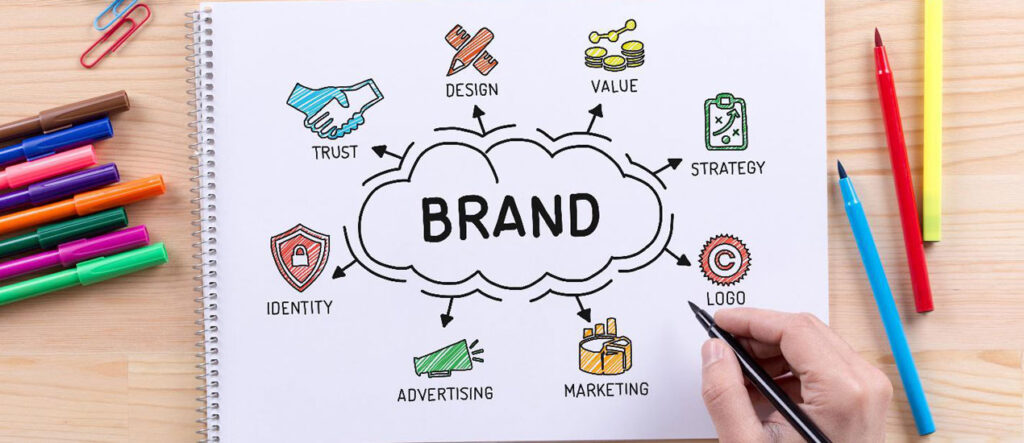Have you ever wondered why some websites leave you in awe while others make engaging with their content hard? The answer could lie in the power of visual storytelling.
Visual storytelling conveys a message and evokes emotions through visuals like design, images, and videos. It can be an incredibly powerful tool for web designers, allowing them to create compelling digital experiences that help businesses better connect with users and stand out from competitors.
In this blog post, we’ll explore how visual storytelling plays a role in website design and branding efforts today.
Create a Brand Story
A compelling brand story seamlessly communicates your business values, resonates with your target audience, and maintains consistency across all channels. According to the experts at Hook Agency, one crucial aspect of crafting a successful story is the careful selection of website color schemes. By considering how you want to visually present yourself, you can create a profound impact using bold and vibrant palettes that captivate consumers. Yet, an impactful brand story encompasses more than just visual elements; it should stir emotions, ignite action, and forge connections with people’s core values.
However, it’s essential to remember that a strong brand story should never be excessively lengthy or convoluted. Instead, simplicity, clarity, and engagement are key elements you should strive for in its creation.
Tools for Website Storytelling

Source: extension.harvard.edu
Tools for website storytelling include various visual elements such as photos, videos, infographics, animations, and illustrations. These tools allow web designers and branding professionals to create compelling narratives and communicate complex ideas in a way that is easy to understand and engaging for users.
Stock photos, in particular, are a popular choice for visual storytelling because they are cost-effective and readily available. Many websites offer free or low-cost stock photos & images that can be used to enhance the visual appeal of a website and reinforce the brand’s messaging.
Know the Audience Demographics
Knowing the audience demographics is crucial for effective visual storytelling in web design and branding. Understanding the age, gender, location, interests, and preferences of the target audience helps designers to create visual content that resonates with them and increases engagement.
For example, if the target audience is young adults, using vibrant colors and edgy graphics may be more effective than traditional, conservative imagery.
On the other hand, if the target audience is older adults, using more classic and sophisticated imagery may be more effective.
Similarly, incorporating local imagery or cultural references can make the visual content more relatable and engaging if the target audience is primarily located in a specific region. For instance, if a company is targeting customers in Japan, using imagery that reflects Japanese culture, such as cherry blossoms or traditional architecture, can help to create a stronger emotional connection with the audience.
Give a Structure to Your Story
A well-structured story should have a beginning, middle, and end. It should be told in a logical sequence that builds up to the climax. It helps ensure that users follow the narrative and engage with the content. The structure can be conveyed through visuals, such as a timeline, storyboard, or text and dialogue.
To make your story more effective, it is essential to consider how you want the user to feel after they have read or watched it.
However, it is also essential to remember that a good story should leave the user with something to think about. Consider including an unexpected twist or leaving the story open-ended to allow the user to draw conclusions.
Creating Emotional Connections

Source: custify.com
If you want to create an emotional connection with your audience, focus on the characters in your story, and think about how they interact with each other and the world around them is essential. The goal is to create a narrative your audience can relate to and empathize with.
Visual storytelling also provides an opportunity to evoke certain emotions in your audience. You can use different colors and shapes to convey a particular mood or feeling and use music and sound effects to enhance the emotional impact of your story further.
Using real-life stories or case studies can make your story more relatable and engaging for the audience. It can create an emotional bond between the user and the brand, positively influencing their purchasing decisions.
Use of Typography
Typography plays an important role in visual storytelling. It can be used to communicate a message, create suspense or enhance the overall aesthetic of your content. For example, larger and bolder fonts can draw attention to critical points or highlight important words or phrases.
On the other hand, using different fonts and font sizes can create an interesting visual hierarchy that guides the user’s gaze through the content. Additionally, adding icons or illustrations alongside the text can help to clarify and reinforce the message.
Reinforcing Brand Identity
The goal is to create a consistent and recognizable brand identity that resonates with the audience and sets the brand apart from competitors.
Reinforce brand identity using visuals consistent with the brand’s values and messaging. For instance, a brand focusing on sustainability might use visuals highlighting environmentally-friendly practices, such as using recycled materials or reducing waste. It helps to reinforce the brand’s identity and create a sense of alignment between the brand and its audience.
Creating a cohesive and recognizable brand identity that resonates with the audience can be achieved using consistent branding elements and visuals aligned with the brand’s values and messaging. It helps to establish a strong and unified visual language that connects with the audience and sets the brand apart from its competitors.

Source: gomedia.com
Conclusion
Visual storytelling has become an important tool for web designers and brand managers. It allows web designers to tell a story that helps the customer understand their product or service in an interesting way while allowing brands to create meaningful and memorable content. Writing, images, animation, and video can all be used cleverly to give visitors a message to remember.
Visual storytelling can help craft a unique identity for a company or idea, helping it stand out. This is why visual storytelling should always be considered part of any website design or branding strategy. After all, stories are powerful. Words alone sometimes just don’t cut it.



